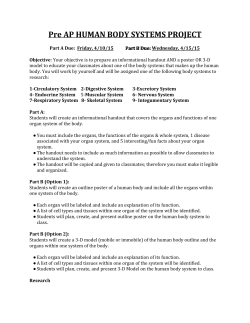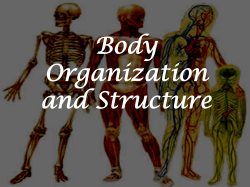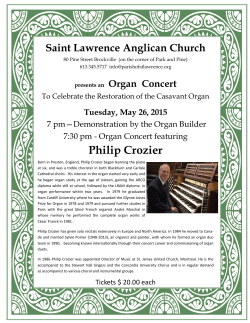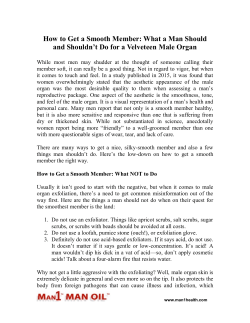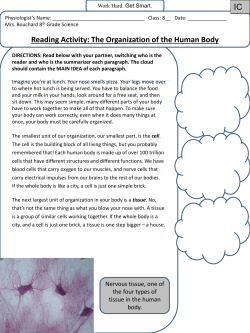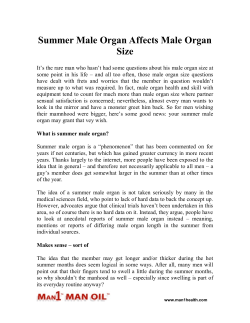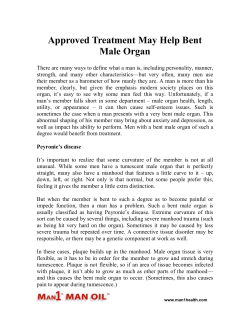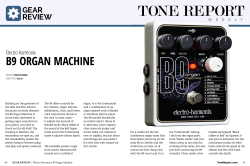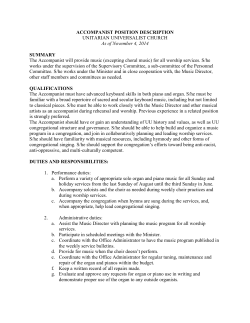
Advances in bio-artificial and 3D
ARTIFICIAL TISSUES AND SCAFFOLDING A BME 281 presentation by: Zachary Brown WHAT IS THERE PURPOSE? • Today, the waiting lists for donated organs is very high, and scientists are trying to decrease the wait time, and increase the rate of successful transplants in the process. • Artificial tissues and scaffolds are synthetically created to mimic the structure of an organ. • The less complex the organ, the easier and faster time it takes to recreate the organ needed for that patient’s body THE CREATION PROCESS • There are 2 ways in which scaffolds are made to create the base of the organ: • taking a pre-existing non-functional same organ and decellularizing it into a hallow base of its membranous cells Or • Synthetically creating one using nano-fibrous structures that act like the matrix which makes up the collagen fibers of bones, blood vessels, etc. • scientists can create these structures using the processes of: • Electro-spinning- larger size matrix form • Phase separation-smaller size matrix form • Self-assembly- average size matrix form THE CREATION PROCESS PT.2 • To create compatibility with the patient, “donor cells” or pre-existing cells that make up the healthy part of their body/ specific organ is biopsied and cultivated. • They then use the scaffolds as the base to which these cells will grow, reproduce and regenerate the organ. • The scaffolds will keep the organs shape and then bio-degrade once fully grown. RESULTS • As of 2009, artificially created skin is being sold in Europe at 34 euros per unit (no sure of unit dimensions) by a company called Fraunhofer-Gesellschaf. • Between 2004-2007, Wake Forest University artificially created and transplanted 5 urethras that were successful in testing over the next 6 years. • Artificial kidney was created by a doctor at the University of Michigan that passed when transplanted in sheep ADVANTAGES AND DISADVANTAGES Pros • Lower rates of failure than transplants from a foreign donor • Can decrease the amount of waiting for a transplant from a donor Cons • More complex the organ, the more difficult and larger it takes to create • Not successfully tested on humans for certain organs • Regular donor transplants are still the current option for wait list patients FUTURE • The Bio-printer- • 3-D printed organs: no longer needing the use of these scaffolds to construct organs • OrganovoTM has already created meniscus knee cartilage from 3-D printer • Within the next 20 years, 3-D printing is projected to be able to create organs REFERENCES • Mertsching, H., Walles, T., Hofmann, M., Schanz, J., Knapp, W. H. (2005). Engineering of a vascularized scaffold for artificial tissue and organ generation, Biomaterials,26 (33), 6610-6617. Doi:10.1016/j.biomaterials.2005.04.048.<http://www.sciencedirect.com/science/article/pii/S0142961 205003169> • Smith, L. A., & Ma, P. X. (2004). Nano-fibrous scaffolds for tissue engineering. Colloids And Surfaces B (Biointerfaces), 39(3), 125-131. doi:10.1016/j.colsurfb.2003.l2.004.< http://www.sciencedirect.com.uri.idm.oclc.org/science/article/pii/S0927776503003035> • Thilmany, J. J. (2012). Printed Life. Mechanical Engineering, 134(1), 44-47. • [image]<http://upload.wikimedia.org/wikipedia/commons/2/27/Tissue_engineering_english.jpg> • [image] < http://largecontent.ebscocontent.com.uri.idm.oclc.org/embimages/2f1c0c45dcdf63797ceb4dbee67d95bc/54397580/rdk/m ee/01jan12/45n1.jpg> • Lazarova, I. ( 2013). Advances in bio-artificial and 3D-printed organs.<http://ec.europa.eu/digitalagenda/futurium/en/content/advances-bio-artificial-and-3d-printed-organs>
© Copyright 2025
